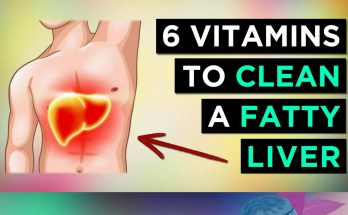Maintaining proper blood circulation in your legs and feet is crucial for overall health. Poor circulation can lead to discomfort, numbness, swelling, and even serious conditions like Peripheral Artery Disease (PAD). While regular exercise and healthy lifestyle choices are essential, incorporating the right vitamins into your diet can significantly enhance blood flow. Below, we’ll explore five key vitamins that support vascular health and improve circulation in the legs and feet.
1. Vitamin C: Strengthens Blood Vessels
Vitamin C is a powerhouse antioxidant that plays a vital role in maintaining vascular health. It helps protect blood vessels from oxidative stress while promoting collagen production—a protein necessary for strong and flexible arteries and veins. By preventing plaque buildup in the arteries, vitamin C reduces the risk of atherosclerosis, which can restrict blood flow to your extremities.
Top Sources of Vitamin C:
- Citrus fruits (oranges, lemons)
- Berries (strawberries, blueberries)
- Leafy greens (spinach, kale)
- Bell peppers
Adding these foods to your diet ensures your body gets enough vitamin C to support healthy circulation.
2. Vitamin E: Prevents Clots and Enhances Flow
Vitamin E is another critical nutrient for improving leg and foot circulation. Known for its antioxidant properties, it prevents LDL cholesterol from oxidizing—a process that contributes to plaque formation in arteries. Additionally, vitamin E acts as a natural blood thinner by reducing platelet aggregation, which helps prevent clots that could impede smooth blood flow.
Top Sources of Vitamin E:
- Nuts and seeds (almonds, sunflower seeds)
- Green vegetables (broccoli, spinach)
- Vegetable oils (sunflower oil, olive oil)
- Fortified cereals
Incorporating these foods into your meals or taking supplements under medical guidance can help boost circulation naturally.
3. Vitamin D: Supports Vascular Health
Although commonly associated with bone health, vitamin D also plays an important role in maintaining cardiovascular function. Low levels of vitamin D have been linked to poor vascular health and increased risks of circulatory issues like PAD. This vitamin regulates blood pressure and supports endothelial function—the inner lining of blood vessels—ensuring smooth blood flow throughout the body.
Top Sources of Vitamin D:
- Sun exposure
- Fatty fish (salmon, mackerel)
- Fortified dairy products
- Egg yolks
Spending time outdoors or consuming vitamin D-rich foods can help maintain optimal levels for better circulation.
4. Vitamin K: Prevents Arterial Calcification
Vitamin K is essential for regulating calcium deposition in the arteries. Without sufficient vitamin K, calcium can accumulate within arterial walls—a process known as calcification—that hardens arteries and restricts blood flow to the legs and feet. By keeping arteries flexible and healthy, this nutrient reduces the risk of circulatory problems like PAD.
Top Sources of Vitamin K:
- Leafy greens (kale, spinach)
- Broccoli
- Brussels sprouts
- Fermented foods (natto)
Including these foods in your diet ensures adequate intake of this crucial vitamin for vascular health.
5. B Vitamins: Reduce Inflammation & Support Circulation
The B-complex vitamins—especially B6, B9 (folate), and B12—are vital for maintaining healthy circulation by reducing homocysteine levels in the bloodstream. Elevated homocysteine is associated with inflammation and arterial damage that can impair blood flow to extremities like the legs and feet.
Top Sources of B Vitamins:
- Fatty fish (tuna, salmon)
- Whole grains
- Leafy greens
- Eggs
Supplementing with a B-complex or consuming these nutrient-rich foods can help lower homocysteine levels while supporting overall vascular health.
Conclusion
Improving leg and foot circulation doesn’t just rely on physical activity—it also depends on proper nutrition. Incorporating these five essential vitamins into your daily routine can strengthen your blood vessels, reduce inflammation, prevent clots or blockages, and promote smoother blood flow throughout your extremities. For best results, combine a balanced diet rich in these nutrients with regular exercise and other healthy lifestyle habits.
If you suspect severe circulation issues or conditions like PAD affecting your legs or feet, consult a healthcare professional for personalized advice on treatment options.
Top 3 Authoritative Sources Used:
- National Institutes of Health (NIH): A leading authority on medical research providing detailed information about vitamins’ roles in human health.
- American Heart Association: A trusted source offering insights into cardiovascular health including how nutrients impact vascular function.
- Mayo Clinic: Renowned for its evidence-based approach to medicine; provides comprehensive guides on managing circulatory issues effectively through diet and lifestyle changes.
Here’s If You Love to Read More: Top 15 Nutrient-Packed Foods to Support Nerve Health and Ease Neuropathy
Here’s Another You Love to Read : GlobalStory





